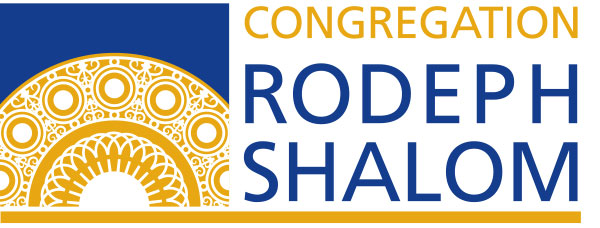 Princess Leia, actually Carrie Fisher, of blessed memory, recalls an outraged father challenging her, because she agreed to wear the skimpy iron bikini, in the scene with Jabba the Hutt, in The Return of the Jedi movie. Fisher’s response? A giant slug captured me, and forced me to wear that stupid outfit, and then I killed him, because I didn’t like it. And then I changed my clothes, back stage!
Princess Leia, actually Carrie Fisher, of blessed memory, recalls an outraged father challenging her, because she agreed to wear the skimpy iron bikini, in the scene with Jabba the Hutt, in The Return of the Jedi movie. Fisher’s response? A giant slug captured me, and forced me to wear that stupid outfit, and then I killed him, because I didn’t like it. And then I changed my clothes, back stage!
Decades later when the newest episode, The Force Awakens was produced, Fisher observed : the female protagonist Rey shows no cleavage, wears baggie pants, and is essentially wrapped in what we might call, a shmata. Progress.
During these decades of Star Wars movies, we have witnessed so much progress for women and other under-privileged groups, in so many areas of our society. Yet, I would submit one area that still demands focus, an area that slows further progress, is the way women are judged on their looks. In many ways, women’s status around appearance is still closer to Princess Leia’s bikini than to Rey’s shmata.
In the presidential campaign, there was a fair amount of attention given to now-President Trump’s comments, that he sometimes sneaks into the backstage of his beauty pageant to take a look at the contestants while they are getting dressed. There was outrage for this violation. But did you notice? We did not hear outrage that there is a pageant in the first place. The problem is not one man’s lack of respect towards women. The problem is that there is a market, an economy that supports proudly parading half-naked women across a televised stage! This misogyny that allows us to measure a woman’s value by how she looks in an evening dress or a swimsuit does not live in Trump Towers; it lives in us. It is normalized—in our mainstream culture, in our workplaces, in our healthcare, in our bias… in ourselves.
Bias is so hard to see. The Psalmist calls to God: “Alumenu limor panecha” (Ps 90). “You can see our concealed darkness; You can see our concealed shortcomings, in the light of Your face.” Why does our Hebrew Bible may this point that God can see our concealed shortcomings? (How do they know what God can see?) Perhaps the Psalm is reminding us about what we do not see – challenging us to dig deep, to find our shortcomings, so they are no longer concealed. That’s how we grow.
Last week, the New York Times featured Michelle Obama in perhaps its final article during her time as first lady. This final article’s focus– on a woman with superior intellect, a legal mind, a history of service, strategic thinking about how to raise her children in the Whitehouse, and initiatives for veteran’s families and national health—the final article’s title was “What Michelle Obama Wore and Why It Mattered.” The article was respectful, appreciating her creative choices as well as her effort to lift up different designers. But it’s hard to imagine, that when someday there is a husband of a president, he would be featured in the New York Times, for his fashion choices.
I believe the focus on women’s appearance conceals from us, women’s wholeness. The bias lives in us. It is normalized—in our mainstream culture, in our technology, in our classrooms, in ourselves. Patriarchy does not only live in men, women are a part of this society as well. And if bias is out there, it’s in here.
Ask my young daughter: what is the most common comment you hear when adults meet you? She will tell you: they say she is beautiful, or they like her clothing. I tell her that people comment on her looks because they don’t yet know her well enough to understand how smart and thoughtful and creative she is. But her brother is standing right there. And no one is commenting on his appearance. The comments on my daughter’s looks come from women as often as men. And when I meet your young daughters and granddaughters, I am certain that I too, remark on their looks. I, like you, miss my concealed shortcomings.
If you are a woman, think about how many comments you heard about your appearance this month. If you are not a woman, ask one.
When women – or men (or anyone)—are judged based on their appearance, so much humanity is concealed. In our gender bias, we miss women’s equal capacity for brilliance and creativity, we miss their reproductive and general healthcare needs, we miss their entitlement to equal pay (not until Equal Pay Day— April 4 in 2017– will women have earned the 2016 salaries of men). In our gender bias, we miss women’s contributions and leadership in our world, and we miss out on our empathy for women’s experiences.
We see this emphasis on women’s appearances in our own biblical text. Leah has weak eyes, Rachel is shapely, Esther, beautiful.
This week, we meet extraordinary women in our Torah portion, Shemot. And we do not know what they look like! When a cowardly Pharaoh decides the Hebrew immigrants have become too numerous, he decrees their baby boys be killed. Grounded in their fear of God, the Hebrew midwives Shifrah and Puah defy Pharaoh’s decree, and save newborn Moses who will become the leader of the Israelites. The midwives cleverly explain their civil disobedience to Pharaoh by saying the Hebrew women are so vigorous, they just deliver their babies too quickly, for the midwives to intervene and kill them.
Our commentaries ask, were Shifrah and Puah themselves Israelites, or were they Egyptian midwives assigned to the Israelite women. According to the accepted reading of the text, lam-yal-dot ha-ivriyot, they are Hebrew midwives. Yet our Torah originated in Hebrew consonants, with vowels only added generations later, and not appearing in the scroll. In this case, one’s choice of vowel determines the meaning. Instead of Hebrew midwives, lam-yal-dot ha-ivriyot, some of our medieval commentators read, lim-yal-dot ha-ivriyot, meaning “midwives to the Hebrews.”
If Shifrah and Puah are midwives to the Hebrews, but not Hebrews themselves, then their resistance is not for the sake of their own people. They act not in self-interest but with courage and compassion for another vulnerable group. Inspired by their yirah—their awe and fear of God– the midwives love and save another tribe’s child.
Shirah and Puah remind us, it is not a mitzvah to look good. It is a mitzvah to be in awe of God, to be in tune with our moral compass, so much so that we boldly love the vulnerable.
That’s why I am marching in Philadelphia tomorrow, with Shifrah and Puah, and so many others.
In these months, hate, bigotry and demonization have fueled a new sense of urgency. But ask a black person and they will tell you, the bigotry was already there. Ask an undocumented immigrant and they will tell you, it was there. Ask a Jew, a person with a disability, a Muslim, a woman, an LGBTQ American, they will tell you, it’s been there. And if it’s been there all along, it’s been here, all along.
The Psalmist calls to God: “Alumenu limor panecha/You can see our concealed darkness; You can see our concealed shortcomings, in the light of Your face.” May the Psalmist’s cry, urge us to see our own concealed darkness, our own concealed shortcomings.
And when we shed that light, and we see, may we be inspired to overcome our gender bias, to see through the veil of appearances, to the humanity in us all.
